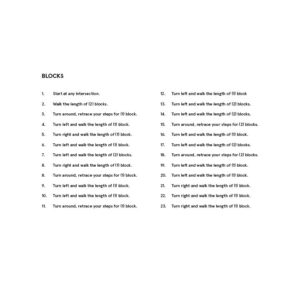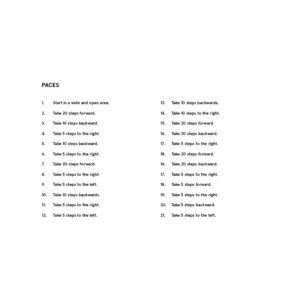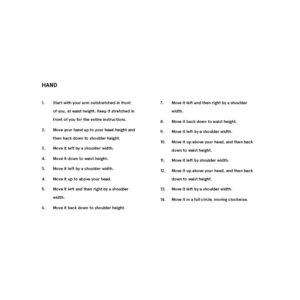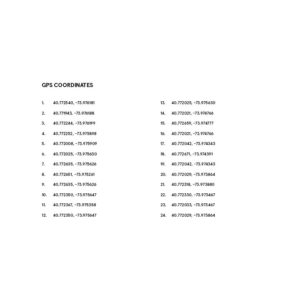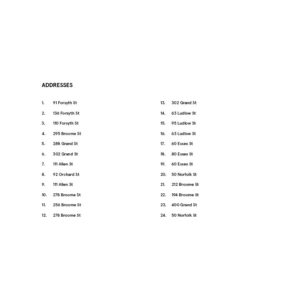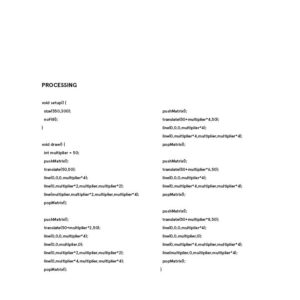Draw By Instruction is an instruction set for drawing “Hello” in different contexts. Each set is described in relative terms specific to each context: paces, city blocks, shoulder width, GPS coordinates, Processing code, and so on.
The means determine the outcome. Processing code will be executed the same way each time, while instructions that rely on the body as instrument will never be identical.
Interestingly, as each instruction set produces the same letters, most also have the same number of steps. The patterns for producing an L become evident: start at one point, move in one direction, and then reverse back to the same point.
Technicals
The instructions are based on previous maps, but the expectation for performance is made explicit.
